Chapter 1. Introduction and background
Project Background and Purpose
Federal Automated Vehicles Policy
Stakeholder Engagement
Chapter 2. Automated Driving System Features
Overview
Approach
Framework for Discussing ADS Features
Levels of Driving Automation
Design Specific Functionality
ADS Tactical and Operational Maneuvers
Identification of Concept aDS Features
Category 1, L3 Conditional Automated Traffic Jam Drive Feature
Category 2, L3 Conditional Automated Highway Drive Feature
Category 3, L4 Highly Automated Low-Speed Shuttle Feature
Category 4, L4 Highly Automated Valet Parking Feature
Category 5, L4 Highly Automated Emergency Takeover
Category 6, L4 Highly Automated Highway Drive Feature
Category 7, L4 Highly Automated Vehicle/Transportation Network Company (TNC) Feature
Summary of Generic ADS Features
Summary
Chapter 3. Operational Design Domain
Overview
Approach
Influences for Defining the ODD Framework
Automated Driving Systems 2.0 – A Vision for Safety
2016 SAE J3016
California Policy
PEGASUS Project
Others Referenced
Guiding Principles
Defining an ODD Taxonomy
ODD Category Descriptions
Physical Infrastructure
Roadway Types
Roadway Surfaces
Roadway Edges
Roadway Geometry
Operational Constraints
Speed Limit
Traffic Conditions
Objects
Signage
Roadway Users
Non-roadway User Obstacles/Objects
Environmental Conditions
Weather
Weather-induced Roadway Conditions
Particulate Matter
Illumination
Connectivity
Vehicles
Traffic Density Information
Remote Fleet Management System
Infrastructure Sensors and communications
Zones
Geo-fencing (Crosbie, 2017)
Traffic Management Zones
School/Construction Zones
Regions/States
Interference Zones
ODD Identification for ADS Features
Summary
Chapter 4. Object and Event Detection and Response Capabilities
Overview
approach
Findings
Baseline ODDs
L3 Conditional Automated Traffic Jam Drive Feature
L3 Conditional Automated Highway Drive Feature
L4 Highly Automated Vehicle/TNC Feature
Baseline OEDR Behaviors
L3 Conditional Automated Traffic Jam Drive Feature
L3 Conditional Automated Highway Drive Feature
L4 Highly Automated Vehicle/TNC Feature
L3 Conditional Automated Traffic Jam Drive Feature
L3 Conditional Automated Highway Drive Feature
L4 Highly Automated Vehicle/TNC Feature
Summary
Chapter 5. Preliminary Tests and Evaluation Methods
Overview
Approach
Findings
Testing Architecture
Modeling and Simulation
Closed-Track Testing
Open-Road Testing
Test Scenarios
Testing Challenges
International ADS Testing Programs
AdaptIVe
PEGASUS
Summary
Chapter 6. fail-operational and fail-safe mechanisms
Overview
Approach
Findings
Failure Modes and Effects
Sensing and Communication
Perception
Navigation and Control
Human-Machine Interface
Summary
ADS Behavior Mapping
Failure Mitigation Strategies
Fail-Safe Mechanisms
Fail-Operational Mechanisms
Summary
Chapter 7. summary and conclusions
Appendix A. Operational Design domain samples
L3 Conditional Traffic Jam Drive
L3 Conditional highway drive
L4 Highly automated TNC
Appendix B. Modeling and Simulation for SCENARIO TESTING
Parameter Characterization
Subsystem Testing
Fault Detection
Appendix C. sample test procedures
perform lane change/low-speed merge
ODD Characteristics
OEDR Characteristics
Failure Behaviors
Test Protocol
Vehicle Platforms
Vehicle Roles
Test Scenarios
Test Scenario Sample Visualizations
General Procedures
Ambient Conditions
Personnel
Test Data and Equipment
Test Facility
Scenario Test: PLC_Comp_15 – Straight Road, Complex, 15 mph
Scenario Description
Test Subject and Purpose
Initial Conditions
Test Velocities
Metrics
Disengagements
Separation Distances
Signal Status
Execution of Procedure
Trial Validity
Evaluation Metrics
Perform Vehicle Following
ODD Characteristics
OEDR Characteristics
Failure Behaviors
Test Protocol
Vehicle Platforms
Vehicle Roles
Test Scenarios
Test Scenario Sample Visualizations
General Procedures
Ambient Conditions
Personnel
Test Data and Equipment
Test Facility
Scenario Tests: VF_S_25_Slow – Straight Road, POV Slower than SV
Scenario Description
Test Subject and Purpose
Initial Conditions
Test Velocities
Metrics
Disengagements
Following Distance
Deceleration Rate
Execution of Procedure
Trial Validity
Evaluation Metrics
Move Out of Travel Lane/Park
ODD Characteristics
OEDR Characteristics
Failure Behaviors
Test Protocol
Vehicle Platforms
Vehicle Roles
Test Scenarios
Test Scenario Sample Visualizations
General Procedures
Ambient Conditions
Personnel
Test Data and Equipment
Test Facility
Scenario Tests: MOTL_Comp_15 – Straight Road, Complex, 15 mph
Scenario Description
Test Subject and Purpose
Initial Conditions
Test Velocities
Metrics
Disengagements
Separation Distances
Deceleration Rate
Execution of Procedure
Trial Validity
Evaluation Metrics
Detect and Respond to School Buses
ODD Characteristics
OEDR Characteristics
Failure Behaviors
Test Protocol
Vehicle Platforms
Vehicle Roles
Test Scenarios
Test Scenario Sample Visualizations
General Procedures
Ambient Conditions
Personnel
Test Data and Equipment
Test Facility
Scenario Tests: SB_OD_25_Straight – Opposing Direction in Adjacent Lanes, Straight Road
Scenario Description
Test Subject and Purpose
Initial Conditions
Test Velocities
Metrics
Disengagements
Separation Distance at Stop
Execution of Procedure
Trial Validity
Evaluation Metrics (Performance Metrics – Pass/Fail Criteria)
Detect and Respond to Encroaching Oncoming Vehicles
Test Protocol
Vehicle Platforms
Vehicle Roles
Test Scenarios
Test Scenario Sample Visualizations
General Procedures
Ambient Conditions
Personnel
Test Data and Equipment
Test Facility
Scenario Tests: EOV_S_45_40 – Straight Road, 45 mph, 40 mph Opposing Vehicle
Scenario Description
Test Subject and Purpose
Initial Conditions
Test Velocities
Metrics
Disengagements
Avoidance Distance
Deceleration Rate
Yaw Rate
Execution of Procedure
Trial Validity
Evaluation Metrics
Detect and Respond to Pedestrians
Test Protocol
Vehicle Platforms
Vehicle Roles
Other Definitions
Test Scenarios
Test Scenario Sample Visualizations
General Procedures
Ambient Conditions
Personnel
Test Data and Equipment
Test Facility
Scenario Tests: Ped_Crosswalk_Sign_S_25 – Crosswalk Markings and Signs, Straight, 25 mph
Scenario Description
Test Subject and Purpose
Initial Conditions
Test Velocities
Metrics
Disengagements
Separation Distance
Deceleration Rate
Execution of Procedure
Trial Validity
Evaluation Metrics
Appendix D. Behavior competency Comparison
References
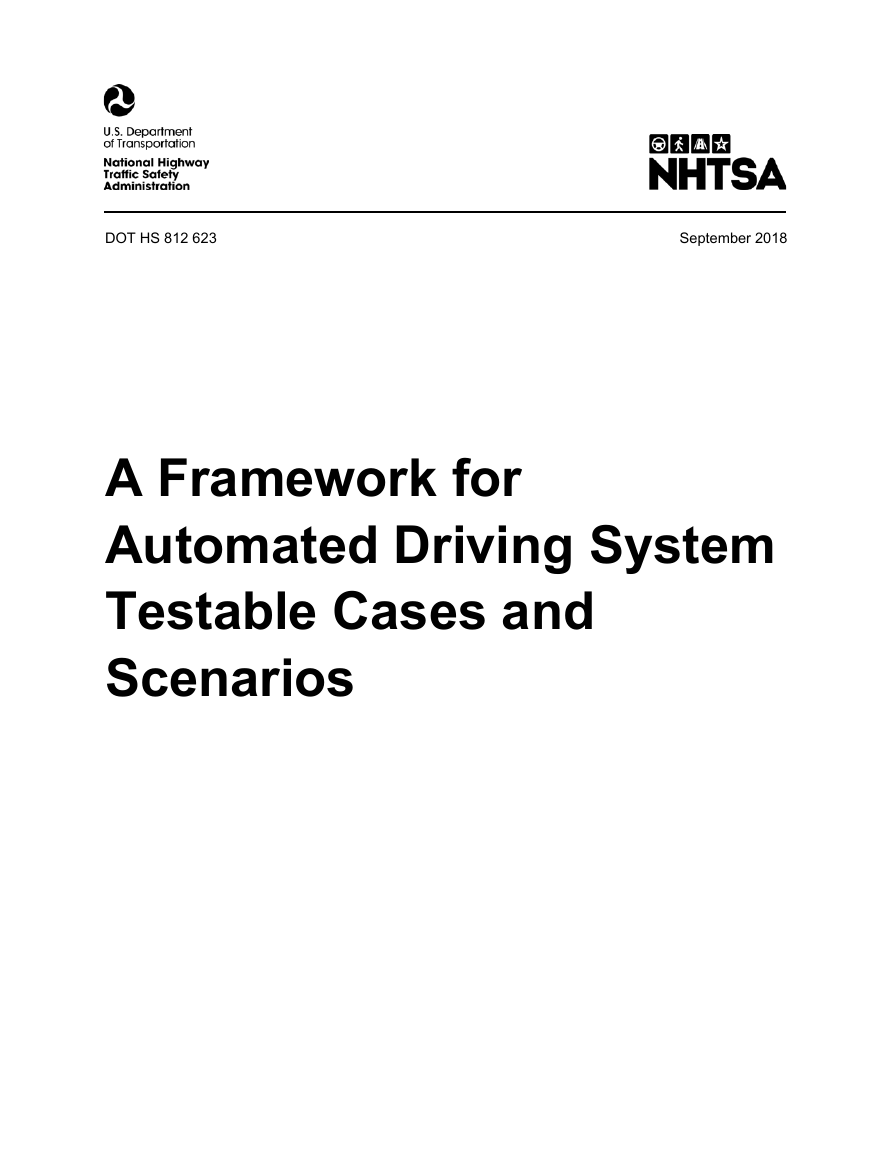
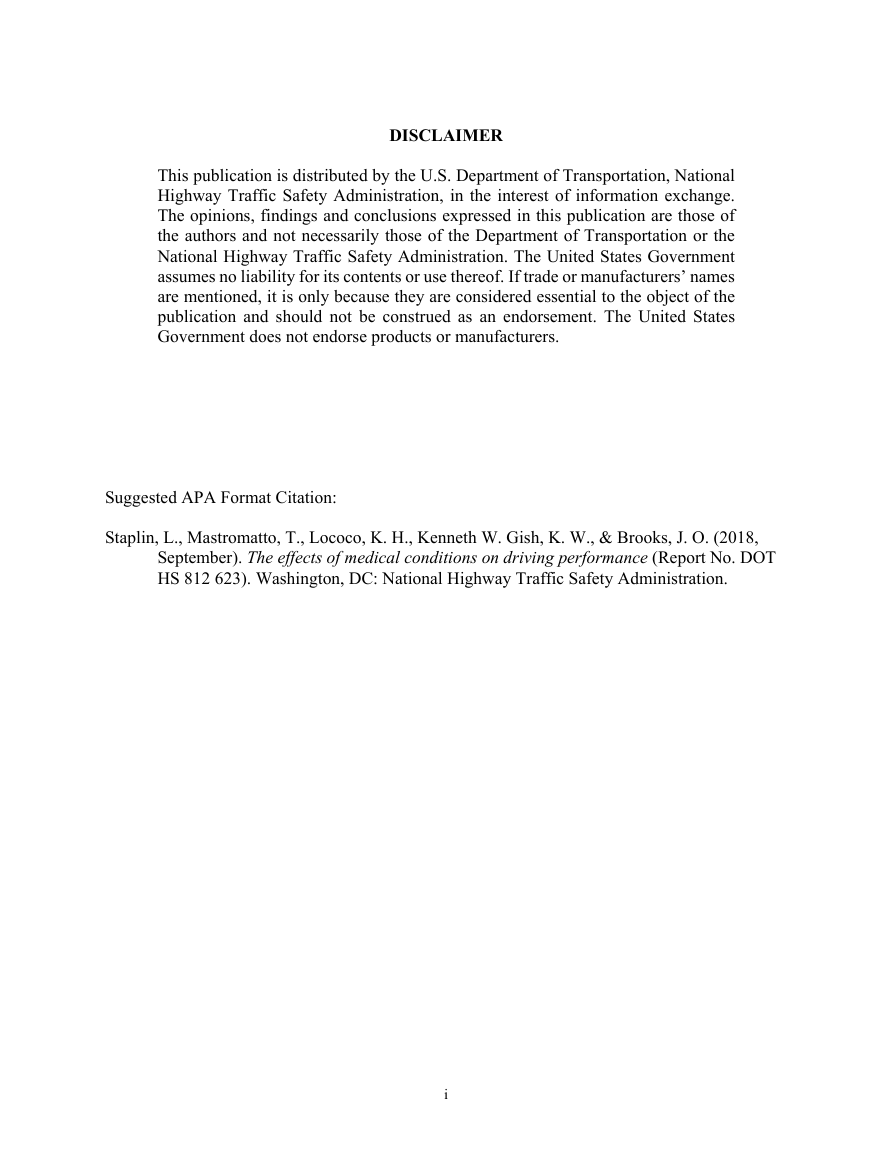

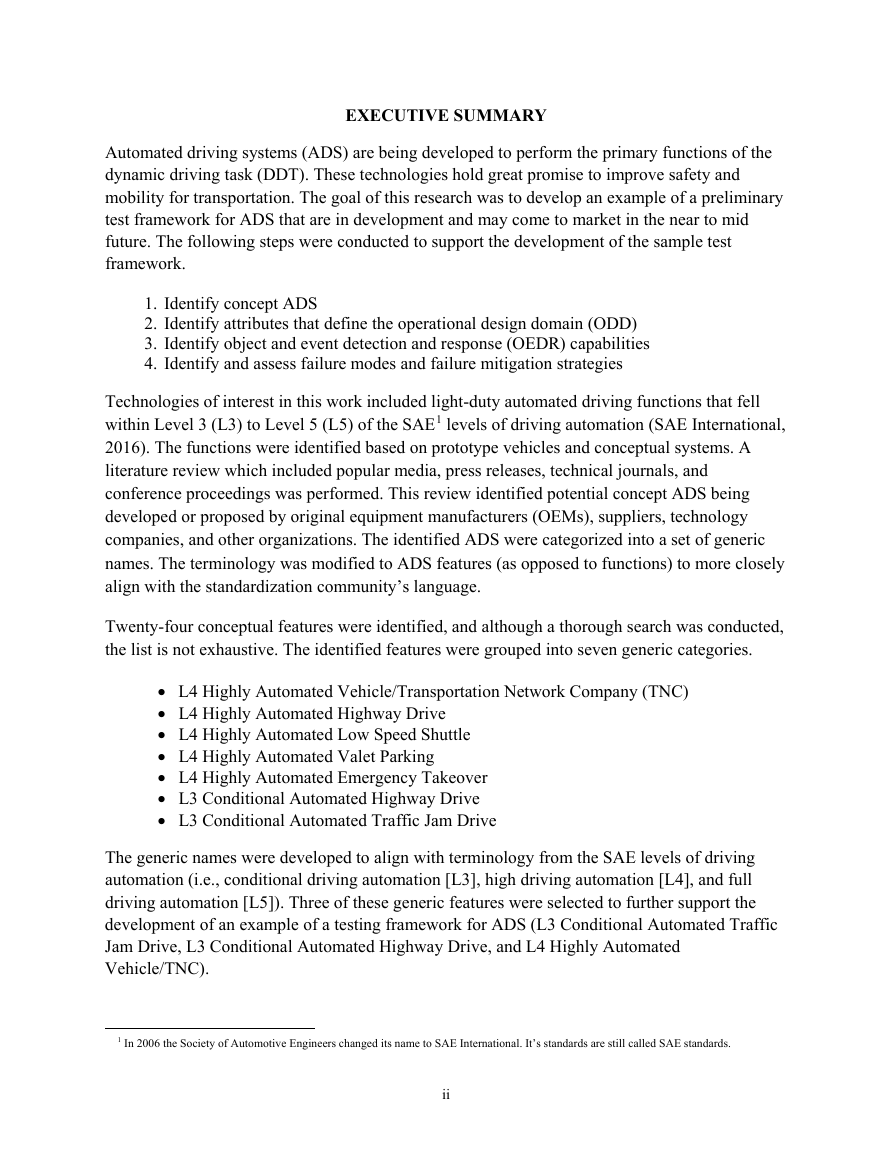

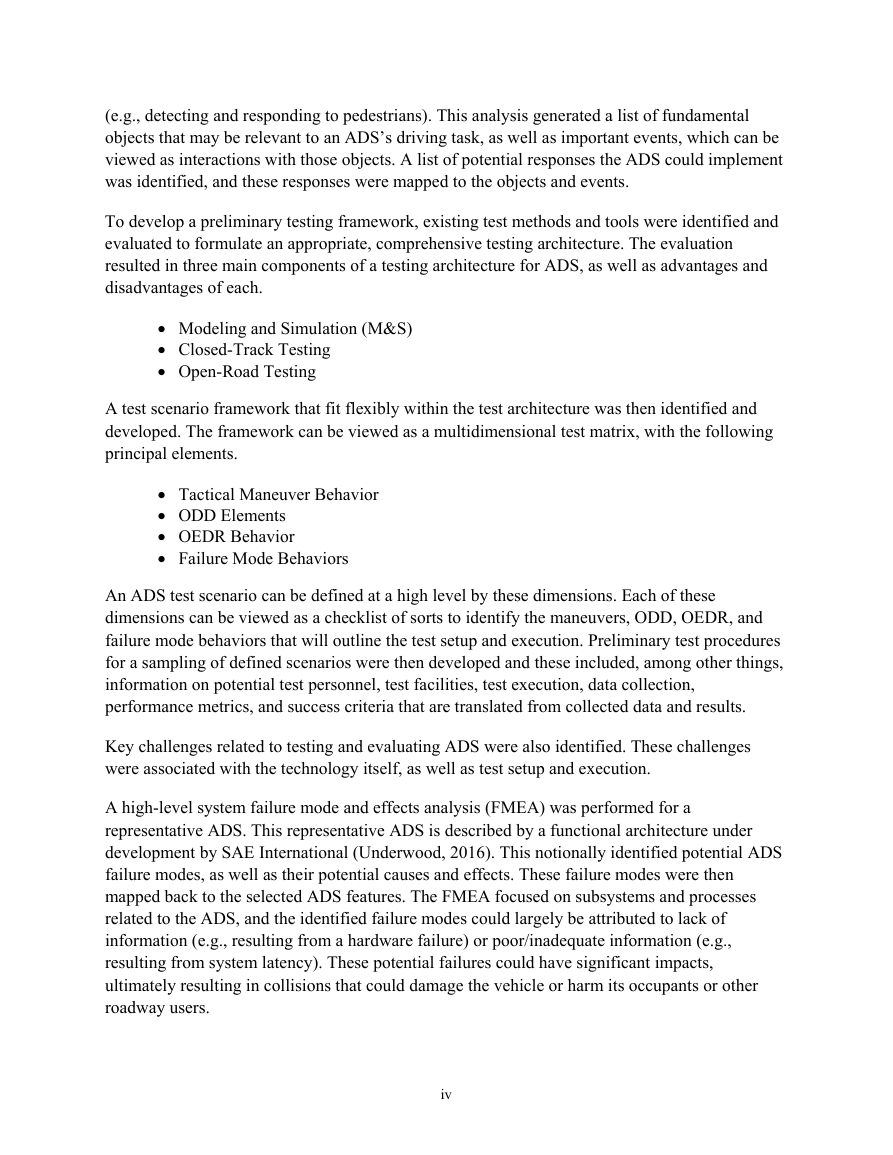
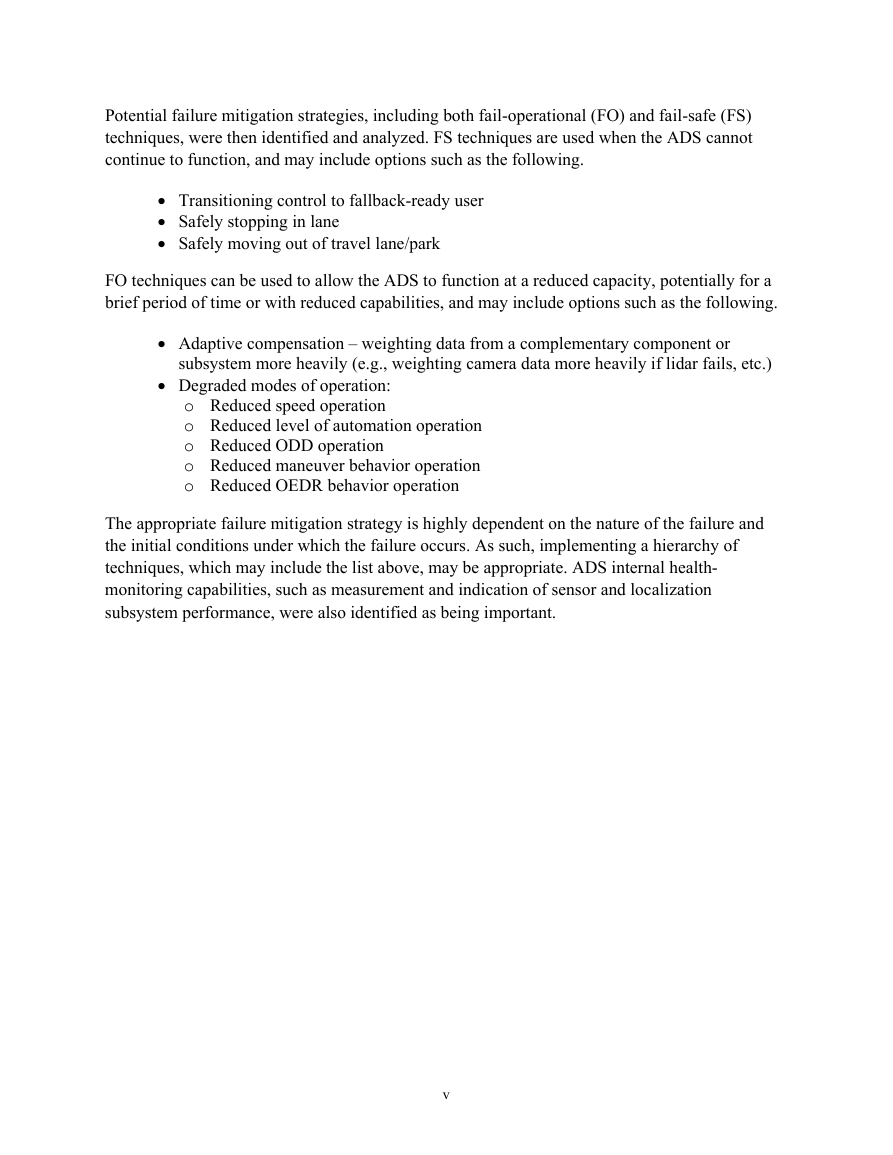









 2023年江西萍乡中考道德与法治真题及答案.doc
2023年江西萍乡中考道德与法治真题及答案.doc 2012年重庆南川中考生物真题及答案.doc
2012年重庆南川中考生物真题及答案.doc 2013年江西师范大学地理学综合及文艺理论基础考研真题.doc
2013年江西师范大学地理学综合及文艺理论基础考研真题.doc 2020年四川甘孜小升初语文真题及答案I卷.doc
2020年四川甘孜小升初语文真题及答案I卷.doc 2020年注册岩土工程师专业基础考试真题及答案.doc
2020年注册岩土工程师专业基础考试真题及答案.doc 2023-2024学年福建省厦门市九年级上学期数学月考试题及答案.doc
2023-2024学年福建省厦门市九年级上学期数学月考试题及答案.doc 2021-2022学年辽宁省沈阳市大东区九年级上学期语文期末试题及答案.doc
2021-2022学年辽宁省沈阳市大东区九年级上学期语文期末试题及答案.doc 2022-2023学年北京东城区初三第一学期物理期末试卷及答案.doc
2022-2023学年北京东城区初三第一学期物理期末试卷及答案.doc 2018上半年江西教师资格初中地理学科知识与教学能力真题及答案.doc
2018上半年江西教师资格初中地理学科知识与教学能力真题及答案.doc 2012年河北国家公务员申论考试真题及答案-省级.doc
2012年河北国家公务员申论考试真题及答案-省级.doc 2020-2021学年江苏省扬州市江都区邵樊片九年级上学期数学第一次质量检测试题及答案.doc
2020-2021学年江苏省扬州市江都区邵樊片九年级上学期数学第一次质量检测试题及答案.doc 2022下半年黑龙江教师资格证中学综合素质真题及答案.doc
2022下半年黑龙江教师资格证中学综合素质真题及答案.doc